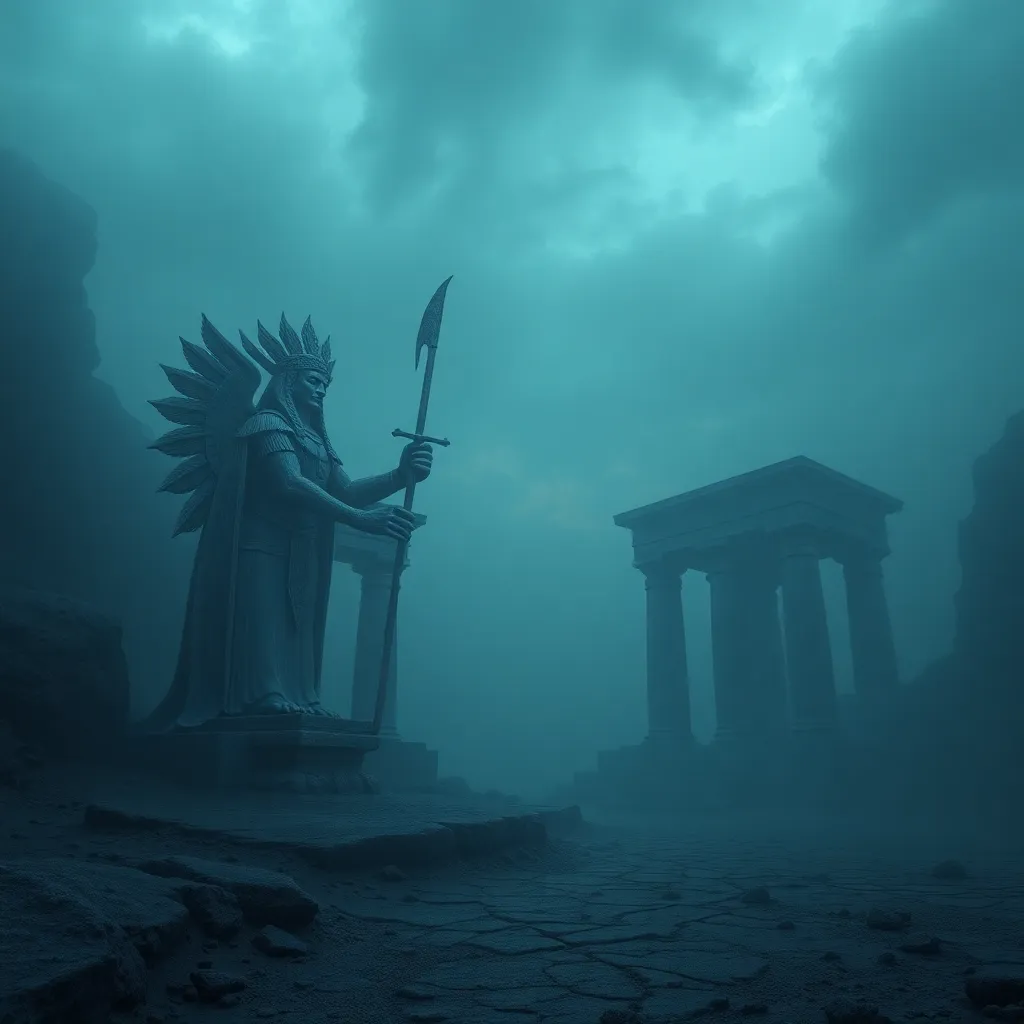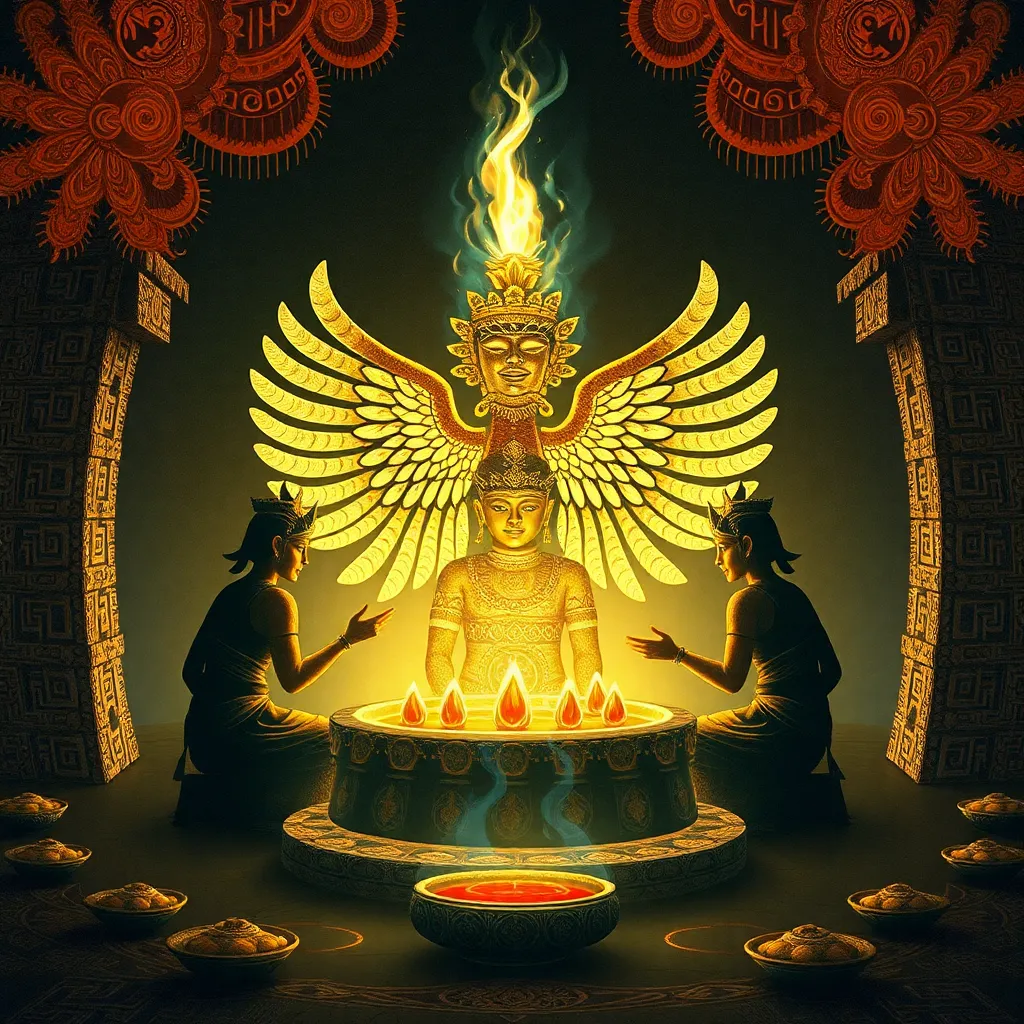The Lamassu and the Ahura Mazda: Investigating the Interplay of Divine Powers
I. Introduction
The Lamassu and Ahura Mazda are two of the most significant divine figures from ancient cultures, representing the rich tapestry of mythology and religion in the ancient Near East. The Lamassu, a protective deity with a hybrid form of a human and animal, served as a guardian figure in Mesopotamian architecture, while Ahura Mazda, the supreme god in Zoroastrianism, embodied the principles of truth and righteousness. Understanding these figures provides insight into the importance of divine representations in ancient cultures, as well as the interplay between different belief systems.
This article aims to explore the characteristics, roles, and cultural significance of the Lamassu and Ahura Mazda, highlighting their interactions and influences on one another in the context of historical and archaeological evidence.
II. Historical Context
A. Origins of the Lamassu in Mesopotamian mythology
The Lamassu originated in the ancient civilizations of Mesopotamia, particularly in the Assyrian and Babylonian cultures. These protective spirits were often depicted as having the body of a lion or bull, the wings of an eagle, and the head of a human. They were placed at the entrances of palaces and temples to ward off evil and protect the sanctity of the space.
B. The significance of Ahura Mazda in Zoroastrianism
Ahura Mazda, on the other hand, is the central deity in Zoroastrianism, a faith founded by the prophet Zoroaster in ancient Persia. Ahura Mazda is portrayed as the creator of the universe, embodying wisdom and light, and representing the ultimate truth. The worship of Ahura Mazda emphasizes the duality of good and evil, with a strong focus on moral choices and ethical living.
C. Cultural and religious exchanges in the ancient Near East
The ancient Near East was a melting pot of cultures and religions, where trade routes facilitated not only the exchange of goods but also ideas and beliefs. The interactions between Mesopotamian and Persian cultures led to a blending of religious practices, influencing the portrayal and understanding of divine figures like the Lamassu and Ahura Mazda.
III. Iconography and Symbolism
A. Description and features of the Lamassu
The Lamassu is characterized by its imposing size and intricate details. Key features include:
- Hybrid Form: A combination of human, lion, and bird, symbolizing strength and vigilance.
- Facial Expressions: Often depicted with a serene yet fierce expression, embodying both protection and power.
- Wings: Representing divinity and the ability to transcend earthly concerns.
B. Attributes and representations of Ahura Mazda
Ahura Mazda is often depicted in a more abstract form, symbolizing his omnipresence and divine wisdom. His attributes include:
- Fire: Representing purity and the divine spirit.
- Light: Symbolizing truth and knowledge.
- Winged Disk: A common symbol in Zoroastrian art, representing his celestial nature.
C. Comparative analysis of their iconographic elements
While both the Lamassu and Ahura Mazda serve protective and guiding roles, their iconography reflects different cultural values. The Lamassu’s imposing physicality emphasizes strength and defense, suited for its role as a guardian. In contrast, Ahura Mazda’s representations focus on wisdom, morality, and the abstract nature of divinity, highlighting the philosophical underpinnings of Zoroastrianism.
IV. Functions and Roles in Society
A. The role of the Lamassu as protective deities
In ancient Mesopotamian society, Lamassus were believed to offer protection to cities and individuals alike. They were symbols of strength and were often invoked in times of war or crisis. Their presence in architecture served both a spiritual and a psychological role, instilling confidence in the inhabitants.
B. Ahura Mazda’s influence on moral and ethical standards
Ahura Mazda’s teachings, as presented in the Avesta, guide followers towards ethical living. His influence extends to:
- Truthfulness: Emphasizing honesty and integrity.
- Good Thoughts, Words, and Deeds: Encouraging a holistic approach to morality.
- Environmental Stewardship: Advocating for the care of the earth as a divine creation.
C. The societal implications of worshipping these figures
The worship of the Lamassu and Ahura Mazda reflects the values of their respective societies. While the Lamassu represented physical protection and the enforcement of order, Ahura Mazda’s worship promoted a moral framework that guided personal and communal conduct.
V. Theological Perspectives
A. Understanding the nature of the Lamassu in polytheism
The Lamassu exists within a polytheistic framework, serving as one of many deities that reflect various aspects of life and nature. This multiplicity allowed for a rich tapestry of worship and expression in ancient Mesopotamian religion.
B. Ahura Mazda as the embodiment of monotheistic Zoroastrian beliefs
In contrast, Ahura Mazda represents a monotheistic belief system that emphasizes the singularity of the divine. This perspective shifts the focus from numerous deities to a singular moral authority, influencing the development of later monotheistic religions.
C. The interplay between polytheism and monotheism in ancient religions
The interaction between polytheistic and monotheistic beliefs can be seen in the cultural exchanges of the ancient Near East. As Zoroastrianism emerged, it influenced and was influenced by existing polytheistic traditions, leading to a complex religious landscape where ideas and practices intermixed.
VI. Archaeological Evidence and Artifacts
A. Key archaeological findings related to Lamassu statues
Numerous Lamassu statues have been unearthed in archaeological sites across Mesopotamia, particularly in Assyrian palaces. These monumental figures provide insight into the artistry and cultural significance of protective deities in ancient architecture.
B. Artifacts depicting Ahura Mazda and their historical significance
Artifacts such as inscriptions, coins, and fire altars depicting Ahura Mazda have been discovered throughout Persia. These items highlight the central role of Ahura Mazda in Zoroastrian worship and the broader cultural context of ancient Persia.
C. Interpretation of these findings in the context of divine interplay
The archaeological findings related to both the Lamassu and Ahura Mazda reflect the interplay of their respective cultures. They reveal how these divine figures were integrated into the daily lives of ancient peoples, serving not just religious purposes but also acting as cultural symbols of identity and continuity.
VII. Modern Interpretations and Legacy
A. The influence of Lamassu and Ahura Mazda in contemporary culture
Today, the Lamassu and Ahura Mazda continue to influence art, literature, and even popular culture. Their representations can be seen in various forms of media, symbolizing strength, protection, and wisdom.
B. Relevance of these divine figures in modern religious practices
While Zoroastrianism remains a minority religion, the teachings of Ahura Mazda resonate with followers who seek to embody principles of truth and righteousness. Similarly, the Lamassu remains a powerful cultural symbol, representing the rich heritage of Mesopotamian civilization.
C. Artistic depictions and representations in modern media
Artists and filmmakers often draw inspiration from the Lamassu and Ahura Mazda, reinterpreting their symbolism for contemporary audiences. This continued relevance underscores the enduring legacy of these divine figures and their impact on human culture.
VIII. Conclusion
In summary, the Lamassu and Ahura Mazda represent two distinct yet interconnected aspects of ancient divine powers. The Lamassu, as a protective figure in polytheistic Mesopotamian culture, contrasts with Ahura Mazda’s embodiment of monotheistic Zoroastrian principles. Their interplay highlights the complexity of ancient belief systems and the cultural exchanges that shaped them.
The legacy of these divine figures continues to resonate in modern times, reminding us



